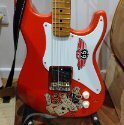All Activity
- Today
-
Graham50 started following Short scale
-

No volume coming from guitar when plugged into amp
Dad3353 replied to DecepticonVibez's topic in Repairs and Technical
Pop this into your Search engine ... 'guitar repairs hull uk' ... Inspired by any of the responses there..? -

No volume coming from guitar when plugged into amp
Dad3353 replied to DecepticonVibez's topic in Repairs and Technical
If you give us your location, maybe someone could recommend nearby source of expertise..? -
Woodinblack started following No volume coming from guitar when plugged into amp
-
.thumb.jpg.34affd8f5098b09fd5e630707cf875e9.jpg)
No volume coming from guitar when plugged into amp
Woodinblack replied to DecepticonVibez's topic in Repairs and Technical
Which one? Was it little or none, because there is a big difference to what the problem could be between all of those. Huh? Is this a professional guitar tech or someone who just called himself that? I am wondering as there is nothing complicated at all in guitar electronics (although the nature of the sheridon makes them harder to get to), so I wouldn't be very keen on listening to the recomendation of someone who couldn't work out the problem. I assume you have tried other leads and amps etc. Its obviousy difficult to get to the componants but if you get them out through the F hole, disconnect the pickup hot first, check there is something coming out of the pickups (if you can) and check that the pickups themselves aren't either shorted out or completely open circuit, then the volume pot, then the switch and trace it through to where the sound goes away, that is where your problem is. It shouldn't take long with a meter to be able to find it out. If you are not comfortable doing this, take it to someone know knows electronics who should be able to help - they don't have to be a guitar tech at all, it is basic knowledge of electronics -
It's been five years and I managed to come into a bit of disposable income after cashing in a business venture and I discovered an popular app for selling second hand stuff. I kept finding really interesting gear at very attractive prices so resistance was futile for stuff that was within my reach. Number 1 (mentioned above): My favourite Yamaha MSG Deluxe is smooth sounding yet offers some girthy bite when needed. Think of the rhythm guitar on Rosanna by Toto. Yes, really. It plays like a dream - as good as any PRS but warmer. The bridge had a stripped thread in a fine tuner hole about a year ago and I was faced with a choice of either trying to tap a new thread in all the tuners for Floyd Rose tuner screws (which are larger in diameter) or looking for a second hand replacement. I ended up scoring a cheap black replacement trem and fitted it with no further issues than the need to replace all the hardware and pickups to match. I prefer the chrome pickups which had to be transferred to number two, the black ones are nice but don't have quite the same synergy. Number 2: The second Yamaha MSG Deluxe is lighter than number 1, has a less figured top and sounds a smidge brighter, it's also a transition model between the v1 and v2 MSG but now has the pickups that were in Number 1. Absolutely glorious neck pickup tone that reminds me of the solo on Wuthering Heights. Yamaha MSG Standard: This came to me in a right state but I bought it because I thought it might have a little more sustain. Thoroughly worn fingerboard and frets and I think it might have had a clear overspray at some point to make it more attractive for sale. After removing all the frets, I discovered the fingerboard was a weird 13" radius. So it was re profiled to 14" and the frets were replaced, levelled and dressed. I also installed some PRS Mira pickups which gave it a bit of midrange bite. It's used for classic rock, most often with the Marshall rack mentioned below. Chandler Custom Strat (mentioned above): My faithful workhorse is still going strong. I made and fitted a new neck from flamed maple with an ebony fingerboard and a nut width that matches the MSGs. I finished it in superglue and the whole guitar is pretty much now Valley Arts spec. I also added a semi super switch so position 3 is neck and bridge pickups, for funky tele chords. The neck is a little more sensitive to climate changes than the original but it feels much easier to play without getting cramped. This and Deluxe NUmber 1 are my two go to guitars. Al Knight Hitmaker (mentioned above): Still have it but it will probably go up for sale soon as I hardly ever play it now. I did toy with fitting a Stratoblaster circuit but after three breadboard prototypes worked fine on the bench, I couldn't get them to work after installation. Probably a short somewhere but I lost patience and shelved the modification. Super low action on this machine and it sounds identical to the guitar on the Chic albums - quite tight and thin. Kleinberger (mentioned above): I accrued the parts and then made a body for it in 2011 while living in NZ. For a while I thought it was a bit dull sounding but I fell in love with it after playing it through the JMP1 preamp. The body wood is from a NZ native tree and is a cross between cherry and mahogany. It filters out enough of the highs from the neck to give it a huge amount of girth but still leave it articulate or woofy. For a tiny guitar, it sounds like a beast and although not my thing, it really djents. A member of my team at work has his eye on it so it may not be here this time next year. The Clean Machine: I built this one Summer 2024 in Jon Shuker's workshop. It was inspired by the Aria RS Esprit but in a Yamaha MSG format and it kind of goes one step further. The original RS Esprit had electronics licensed from Alembic (but built by others) and in this guitar, I used a set of genuine Alembic Activators. The electronics in the RS Esprit were a pair of low pass filters with boost and Nuno at Lusithand kindly tweaked a pair of filters so they were more suitable for guitar frequencies. (Thanks Nuno!) A rare Wilkinson VS100CV bridge was also installed with Graphtec Ghost saddles connected to an acoustiphonic preamp. A rotary pickup selector chooses the piezos for a full acoustic simulation, or bridge/bridge+middle/bridge+neck/middle+neck/neck. Not ideal but the simplest solution in terms of controls. In high gain situations when the high frequencies are filtered a little, lots of interesting harmonics jump out. However the lack of crystalline brightness in clean settings has been a little disappointing and I suspect this is due to the neck woods (the maple is way too soft). Recently I found a guy in Guangzhou who has started offering his own graphite necks for knock off Steinberger M Series guitars for the domestic market. So I've sent him the neck of this guitar and he'll make a copy of the neck in graphite composite...but with a 43mm nut to match the MSGs and Chandler Strat. I hope the graphite neck is going to be rigid enough to brighten up the sound a bit but we will see. There's an ongoing power drain issue with this one that I need to sort out over the Summer. Ibanez S670 (highly modified): I'm not sure this was ever really a S670 as it doesn't have a mahogany body even if the neck is correct. The body wood is more like basswood but it only cost 130 quid and the trem was completely worn out. I looked into an upgrade but none were available so found a like for like replacement for about ten quid. Actually I think the replacement is better quality, the knife edges on the base seem more durable. I had some special order Dimarzio pickups a Mo Joe and a PAF Joe in chrome so thought why not turn it into a S series Chrome boy. I looked into painting and discovered that in the first batch of Chromeboys, Ibanez had used chrome based paint finish (on a metallic undercoat) and it cracked and split after a few years due to seasonal changes. So the more recent version 2 Chromeboys have bodies made of lucite, not wood. I figured another option was to use an automotive vinyl wrap, so I bought some online and got in touch with the city's best wrap specialist who took care of the body in three pieces one afternoon. I tried wrapping myself but discovered I really needed two pairs of hands to lay the vinyl without it sticking to itself. The neck also needed attention with a few frets that were worn from cowboy chords, so I replaced, levelled and dressed them and it plays effortlessly now although the neck profile is U shaped rather than the D I'm used to. The electronics were my usual harness of coil splits for the humbuckers and a semi superswitch which allows position 3 to select both humbuckers instead of the middle pickup. So it'll do stratty stuff as well as the more familar high gain. I ended up playing this guitar at a CNY gig in January and it did a fine job. The experience of installing strings confirm and endorsed my absolute hatred for double locking trems though. Ibanez AWD83T: Last but not least, I mentioned an interest a few years ago in an Ibanez AWD. I went off them for a while, in preference for a Yamaha SAS semi hollow to match the MSGs. However YT research suggested the SAS didn't sound as smooth and jazzy as I wanted whereas the AWD did. One day last month I was trawling a japanese auction site and discovered a rarer AWD83T (with a trem) for sale, put a bid in for less than 200 quid and won. When it arrived, the electronics were a bit dodgy, the trem arm was missing and it was covered in a thick film of nicotine - perhaps the guitar was part of an estate. Not sure, but the main thing was that the neck was good (as I have come to expect from Ibanez) and there was plenty of life in the frets. The electronics issue turned out to be just a poorly soldered earth connection from the pickups and that was sorted in a few minutes and a spare trem arm from a wilkinson V100 bridge fitted perfectly. It's a great value guitar, does jazz and Foofighters in the same breath. I might trial some pickups from my spares department over the summer and see how much of an improvement they make. Otherwise it plays sweetly and smoothly with low action. BQW Custom: And finally...I have found a luthier in northern China who makes instruments featuring some incredible workmanship and he can do pretty much anything including graphite necks. So I've been on a two year waiting list for a build of another Yamaha MSG style instrument but with a through body 3 piece mahogany neck with bound ebony fingerboard, stainless steel frets, lightweight sapele wings, a carved top made from a bicoloured piece of golden camphor and maybe a back from my stash of 42,000 year old NZ swamp kauri...or some 3A flamed maple. The electronics feature a custom HSH set of my favourite Armstrong pickups, a switchable EMG SPC midboost circuit and a Kahler trem. He's finally going to start work on it this month. Also in the planning is a build that will be a 5 string version of my Alembic Series 1 graphite, but that's another story. Ampwise, there's quite a bit of extra stuff. I'm now running four rigs without any real need for this much backline. Tweed Princeton 1x8 combos: These are good amps but I haven't played them in three years, apart from a wet dry wet experiment shortly after the PRII arrived. So they will be going up for sale. Considering they are hand wired and point to point with high quality parts, just like the originals and like later boutique amps, they go for criminally low asking prices but there's not a lot of other option. Fender Princeton Reverb II: This amp was part of a Paul Rivera supervised series that was Fender's attempt to compete with Mesa Boogie. The same series also featured the now legendary Super Champ popularised by Alan Murphy amongst others during the mid eighties. The PRII is arguably the second most coveted amp in the series because it was originally intended to be a Super Champ in a bigger box. It didn't quite turn out like that due to a few minor differences in circuitry but still a really nice sounding amp. The one I have is in near new condition and when pushed with The Xotic AC booster pedal breaks out into this harmonically rich but articulate gain. I replaced the Fender speaker with a Jensen N12K neo out of a Tone Master amp. Fender Concert (II) 1x12: I bought this amp before the PRII in 2020...but it didn't actually end up in my possession, due to various complications, until last month. The Concert II is renowned for it's blackface style cleans - David Gilmour had a wall of them behind him at Live Aid and continued to play them well into the early nineties. If I had written this yesterday, I would have said that it's not quite as tight as the PRII or as rich in the midrange. However tonight I gave it a blast and used a tactic popular with Mesa Mark amp owners...turn the bass down to zero. It worked a treat and while the gain might have been criticised online, I found my amp verged on 5E3 Tweed meltdown - satisfyingly rich and crunchy, like a Twix. Compared to the PRII, it's been gigged but well maintained. The original speaker has been replaced with an Eminence Patriot (almost a requirement for this series of amps, the OEM Fender speakers are not very good.) I also had a custom 1x12 extension cab made for it which has a V30 installed. The gain control needs a little attention but OMG it's LOUD when the master is pushed to 70%. Pedalboard: It's fairly constrained, consisting of an Xotic XW-1 wah into a Keeley C4 comp, then a Zoom MS70CDR for pre-gain modulation into an Xotic AC booster and Amptweaker Tight Rock. Sitting in the side chain of the TR is a Nobels ODR and a Joyo American Sound JF14. The TR then feeds into a Mooer Ocean Machine for reverb and dual delays before hitting the amp. If I am using the Concert II, I'll run the Ocean Machine into the series effects loop at the back for less colouration. I really love the combinattion of the AC Booster and the ODR, its harmonically rich and articulate without getting noisy. The AC Booster makes pretty much all of the other gain pedals sound better if I'm honest. I trialled a Line 6 M9 for post gain modulation but it proved to be a bit of a tone suck so put the Ocean Machine back in. There is also a Crowther Hot Cakes to swap out with the Joyo if I get bored. I'm also going to play about with an Empress parametric eq and boost to see if I can get it to do the same job as the AC Booster at some point. But otherwise really happy with this board, it makes all the right noises. Mesa rack: This started off as a single 4U rack but morphed into two in the last 4 months mainly because there was a lack of volume with the original rack and I had rack gear to spare so...why not? The Mesa rack is based around a Lexicon MPXG2 (with R1 foot controller) that switches a final version Mesa Triaxis preamp inserted in the side chain. The MPX sends a stereo signal into a Mesa Fifty/Fifty power amp which then goes into a pair of Joyo 1x12 cabs each fitted with a Celestion 12" neo creamback. The Fifty/Fifty is a later model, optimised for the Triaxis and it features a 15/50W power switch which almost makes the Marshall 20/20 redundant for practice needs. I later bought a second Triaxis as back up although it has the recto mod in Lead 1 so not quite a direct replacement. Marshall rack: The second 4U rack is based around a Marshall JMP-1 into a Rocktron Intellipitch and then into a Marshall 20/20 power amp. A Rocktron 300A comp evens out any harshness before the signal hits the preamp. It sounds like a Marshall head but can be a little shrill for my taste. The 20/20 power amp made it possible to dial in Marshall-esque tones in the Triaxis's Lead 2 setting. This rack gets used for ACDC and Def Leppard but the MXR Rockman X100 might make the entire rack redundant at some point. The cabs are the same Celestion loaded Joyos shown above. Kemper Stage Profiler board. I had a Kemper before the Mesa Traxis and it sort of became surplus to reqiurements afterwards. The one great thing is that on the largest Ghostfire pedal board, it still weighs less than a 4U rack so its currently first choice for any gigs even though it doesn't quite feel the same as having the real thing blasting away from the back of stage. My favourite settings on the Triaxis, Mesa Studio, Carvin Quad X and Burman GX3 preamps have been profiled as well, for posterity. The signal chain starts with a Shure wireless then a Digitech FreqOut for feedback effects before going into the Kemper. In a loop of the Kemper sits a Line 6 M5 for modulation effects that the Kemper can't do like Dimension D. Out of the Kemper the signal goes into a pair of Hotone Loudster Class D power amps each pumping out 85W into the Joyo cabs. All the profiles loaded into the profiler have the cabinet simulation removed. The cabs used are the same Celestion loaded Joyos as mentioned above. While the cabs are rated at 60W and the output of the Loudsters is rated at 85W, the speakers seem insensitive enough to deal with the extra power without too many issues so far. I gigged wtih this set up and the Ibanez S Series Chromeboy mentioned above. Maintaining this lot keeps me pretty damn busy and then there are the basses, more preamps and other rack gear on top of that too. So there are plans for a clear out soon, some of which driven by the need to make space and some by the sheer fact that keeping this lot maintained takes a lot of time. So once the BQW is complete, I'll be making plans to let the two MSGs go, the HItmaker, the Kleinberger, the chrome wrapped Ibanez S670, the Tweeds, the Marshall rack, the Carvin Quad X (not mentioned above), the Mesa Studio pre (also not mentioned above) and a load of pedal and rack effects.
- Yesterday
-

No volume coming from guitar when plugged into amp
Dad3353 replied to DecepticonVibez's topic in Repairs and Technical
Hmm... This is an odd one indeed. If a guitar tech can't find the problem with the instrument on his workbench, what hope have we..? That being said, there are many potential, albeit rare, reasons for no, or little, volume. The jack socket has been eliminated, but, as we go deeper into the signal chain, we could suspect an issue with the internal wiring, a badly-soldered joint to the potentiometers, a faulty component (tone capacitor..?), dust, dirt or worse in the volume pots, duff contacts on the selector switch and, lastly but least likely, both pick-ups having broken or shorted coil windings. These guitars are not rocket surgery, but are slightly more difficult to work on, as access to the cabling etc is poor. However, any decent guitar tech should be able to at least determine the cause, with a few fairly basic tests. I'd recommend going to another technician for a second opinion; to me, the best 'guess' would be the selector switch being stuck. Hope this helps. -
Good evening, @DecepticonVibez, and ... ... Plenty to read and amuse you here, and lots to learn and share.
-
DecepticonVibez started following Hello From England and No volume coming from guitar when plugged into amp
-
A bit of a strange one this guys. I'm hoping someone can help. I bought an Epiphone Sheraton 150th Anniversary approximately two yyears ago. I had it professionally set up and since then I haven't touched it. It has been sat in it's case for two years. A few wweks ago I decided to get it out and have a jam. When I plugged it in there was no or very little sound coming out, even though the amp was turned up fully. After checking all the obvious things like cables I couldn't work it out. I decided to take it to a guitar tech to get repaired. The guitar tech has looked at it and can't work out what the problem is either. He has checked it all over and even changed the output jack but still there is no volume coming from the guitar. He has advised me to change the harness. He has never come across this problem before. As you can imagine I'm a bit annoyed as the guitar was pretty expensive for an Epiphone and it is supposed to have top quality electronics and Gibson mini humbuckers. I have contacted Epiphone and waiting for a response. Does anyone have an idea what the problem could be?
-
Hi Guys I'm a 42 year old male from England that has always loved guitars, even though I can't really play them. I suppose what I like would be classed as classic rock. I love all sorts of different bands from the 60's up until the 90's. I have joined this forum to get some help and learn more about guitars.
-
DecepticonVibez joined the community
-
I was going to ask about the Katana, but I've just seen your ad on BC, so that answers that question.
-
My new rig Orange Super Crush 100 This has surprised me how good it sounds both clean and dirty 12” Celestion Redback 150w speaker loaded and all solid state so only 18kg weight
-
Adam Gittins joined the community
- Last week
-
I share this backing track by John Scofield, medium swing with quite a few scales, but most of them belong to the same key. I hope you enjoy it and find it useful for studying.
-
Hey Kiwi, I found the California to be a great pedal which added a lot of depth to the high gain mesa head, but I did find that on the base adjustment seemed to suddenly jump, I tried it right down with the base up on the head unit and mainly use it to add a smother mid tone instead for lead work. I used to had a Hammett signature Randall amp which it worked really well with that ! recently I have moved away from physical pedals and been playing with a digital sims at home just for something different, but you can't beat proper pedals !!
-
Mine has been on Reverb for a while. The ex Lindisfarne one.
-
How are you finding the California, I have a full Mesa set up now and the California sounded pretty dark even after I dialled back the bass. Did you find a way to brighten it up?
-
MikkoKarhula started following Time After Time fingerstyle
-
It's fun to make arrangements of 80's songs. They have something in them, maybe it's just nostalgy. Cheers, Mikko Video Tabs
-
I have had one of these too when I was playing in my rockabilly band. I tend to prefer a blackface sound so moved it on after the band stopped. But I was also very impressed by the tone (and the weight), plus the fact that it gave a pretty good output into the PA too so no need to mic.
-
sundayguitar started following BC Rich and Marshall DSL 20
-
I tried one of those Roland a few months back, I gotta see I was impressed : https://thmn.to/thoprod/379467?offid=1&affid=1771
-
HA I looked at this topic and had to have a look at this BC RICH beauty ! https://thmn.to/thoprod/512794?offid=1&affid=1771 damn...
-
Backing track of this great song by Kurt Rosenwinkel. I hope you enjoy it



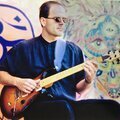

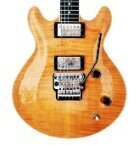
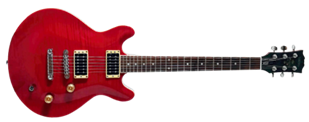
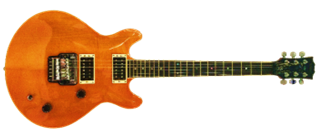
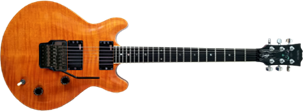
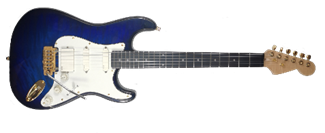
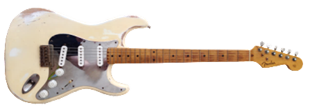
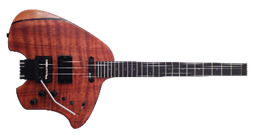

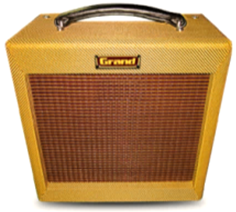

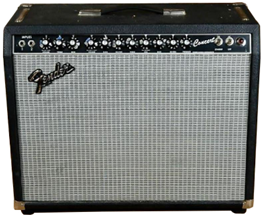
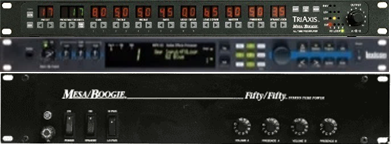
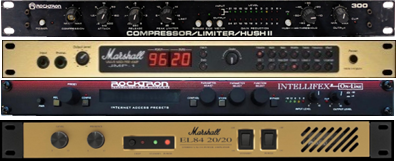
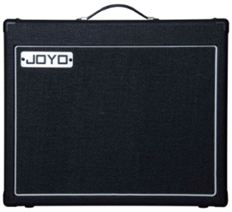

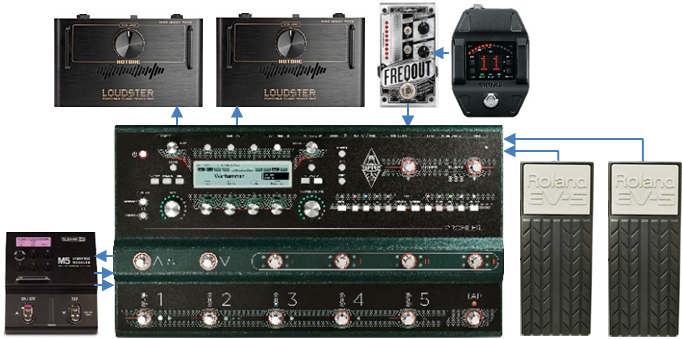
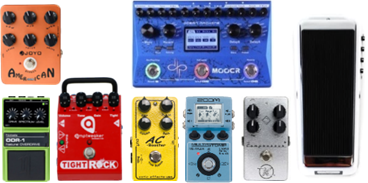

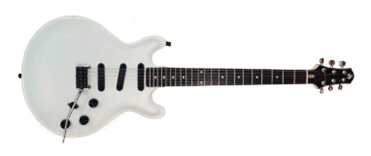
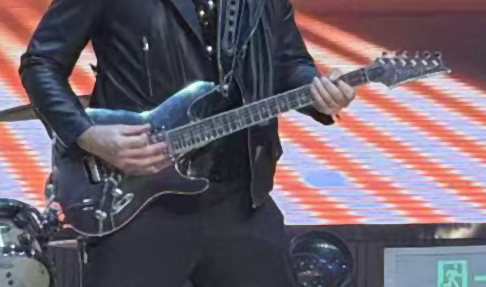
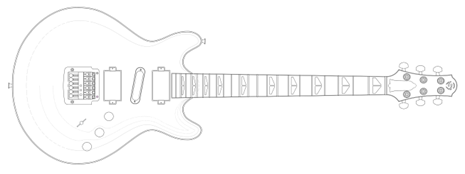




.thumb.jpg.e76a365126351b46415d75e2b98301c6.jpg)

